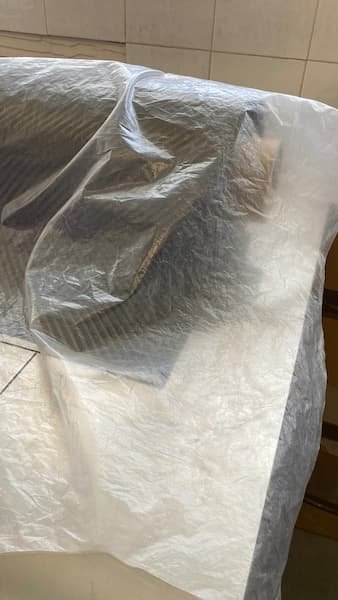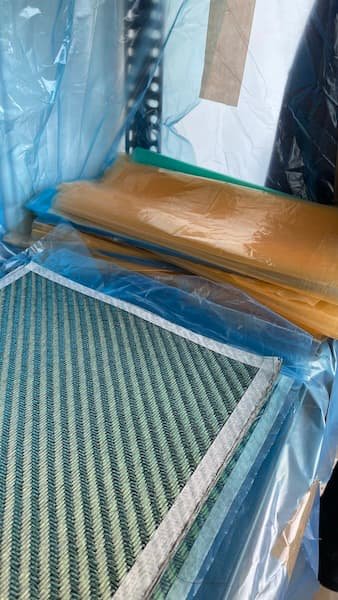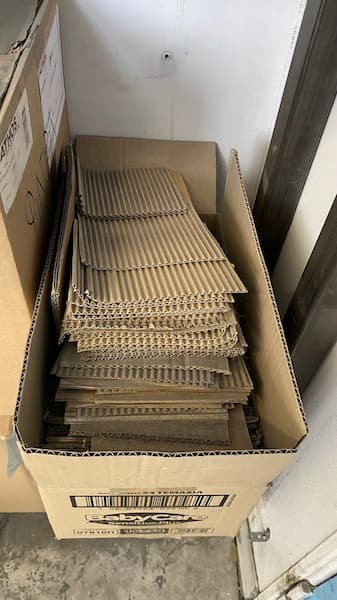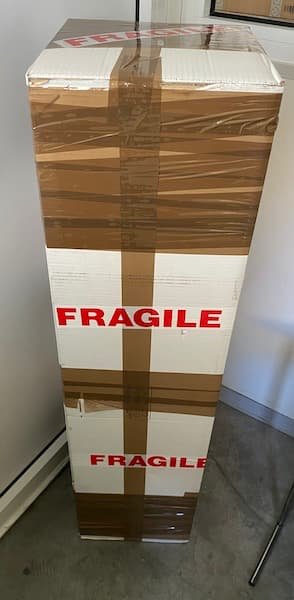
 Nick Pelios
Freediver, Creator
Nick Pelios
Freediver, Creator

 Nick Pelios
Freediver, Creator
Nick Pelios
Freediver, Creator
Every time a product changes hands, it comes wrapped in layers of defense. Cardboard, plastic, foam, bubble wrap, tape. They shield goods from rain, dirt, and clumsy couriers. They also pile up, fast. Globally, the world churns out more than 140 million tonnes of plastic packaging every year. Only about a tenth of that gets recycled into something useful. The rest? Landfills, incinerators, and oceans.
Paper and cardboard fare a little better but still consume forests, water, and energy at an astonishing clip. In the United States alone, containers and packaging account for nearly a third of all municipal solid waste. That is not just paper cuts and recycling bins. That is millions of tons moving through a system that was never built to handle so much single-use clutter.
So the question is simple. If packaging comes in with raw materials, why not use it again when products head back out? That is where Alchemy decided to intervene, not with futuristic tech or billion-dollar investment, but with something more obvious: reuse what is already there.
Our fins start their journey not as fins, but as carbon fiber sheets, resins, and hardware delivered in protective packaging. Thick corrugated boxes, layers of bubble wrap, stiff foam inserts. Most of it is designed to survive long journeys. And most of it would normally be discarded the moment it crossed our threshold.
We saw an opportunity in that pile. Instead of throwing away, we began sorting. A dedicated corner of our workshop became a staging area for reusable packaging. Boxes flattened and stacked. Foam inserts are carefully tucked away. Bubble wrap rolled back into usable bundles.
When it is time to ship fins to divers around the world, we reach for what we already have. A box that once carried carbon fiber now carries a pair of V330s. The same bubble wrap that protected resin drums now cushions blades bound for Hawaii.
We still add fresh elements where safety or presentation demands it. Nobody wants to receive a soggy box or a fin wrapped in resin-stained paper. But 50% of what shields our products today already shielded something else yesterday. That loop inside our line has become second nature.

It is tempting to think that tossing packaging in the recycling bin closes the loop. The truth is more complicated. Recycling requires collection, sorting, cleaning, and processing. Each step consumes energy and often downgrades the material. A recycled plastic wrap is rarely reborn as another wrap. More likely it becomes a lower-grade product, and eventually waste anyway.
Reuse skips the middleman. It keeps the material at the same value level, with no melting or reprocessing required. Studies show reusable packaging systems can slash greenhouse gas emissions by three quarters compared to single-use systems. Waste drops by more than ninety percent. Water pollution from nutrient runoff falls by sixty percent. Those numbers are not marginal improvements. They are game changers.
The economic logic is strong too. Every new box or wrap has a cost. Every disposal or recycling pickup has a cost. By reusing what we already have, we trim those expenses. Less ordering, less storing, less hauling away. The math lines up with the mission.

It has not been flawless. Some packaging arrives dented, soaked, or contaminated by raw materials. Those pieces are culled, cleaned if possible, or recycled if not. We learned to be choosy. Strong cardboard boxes can go through several shipping cycles before they weaken. Bubble wrap survives fewer but still saves us a lot of new material. Foam inserts work wonders until they crack.
Customer expectations matter too. People paying for high-end fins want the unboxing to feel special, not like rummaging through leftovers. We found ways to keep the experience premium while staying true to reuse. Clean reused boxes dressed with fresh tape and labels. Protective wraps paired with crisp new finishing touches. The fin still arrives as a product worth owning, but with a backstory worth telling.
Tracking performance has been critical. If a reused box fails and damages a fin, that is a cost far higher than the savings of skipping a new box. So we watch carefully.

Our next frontier is scale. We want a higher percentage of our outgoing shipments to use repurposed packaging. We are already nudging suppliers toward sending raw materials in formats easier to reuse. Standardized boxes. Cleaner padding. Fewer mixed materials glued together. The closer we get to a predictable stream, the easier it is to keep the loop turning.
We also see potential in designing packaging for multiple lifetimes. Inserts built to flex, not crack. Boxes built to fold and unfold without losing strength. Labels designed to peel and restick. Each of those details makes reuse simpler and longer-lasting.

What once carried the carbon sheets that became our fins now carries the fins themselves.
A box with two lifetimes, headed to a wholesale partner.
The larger context is the circular economy, a world where products and their packaging never really become waste but cycle through roles. At present, only about nine percent of material inputs globally are kept in circulation. The other ninety-one percent is still on a linear path from resource to trash. Alchemy’s packaging loop is small compared to that mountain, but it is a contribution that ripples outward. Every reused box is one less cut tree, one less batch of plastic pellets, one less kilogram of CO₂.
And the best part? This is not futuristic. It is not theoretical. It is happening right now in our workshop, with the same boxes you might one day receive on your doorstep.
References
Coelho, P. M., et al. (2020). Sustainability of reusable packaging – Current situation and future pathways. ScienceDirect.
Reusables.org. “Reduce Environmental Impact with Reusable Packaging.”
Meyers. (2025, January 22). Sustainable Packaging Statistics: 2025.
Woola. “40+ Packaging waste statistics to promote sustainability.”
PlasticsIndustry.org. “The Environmental Benefits of Plastic Packaging in Modern Supply Chains.”
Wrap NGO. “Prevent Problem Plastics.”
IFCO Systems. Description of reusable packaging crates and trays.
“How Circular is the Linear Economy?” (2025). arXiv preprint on global material flows.